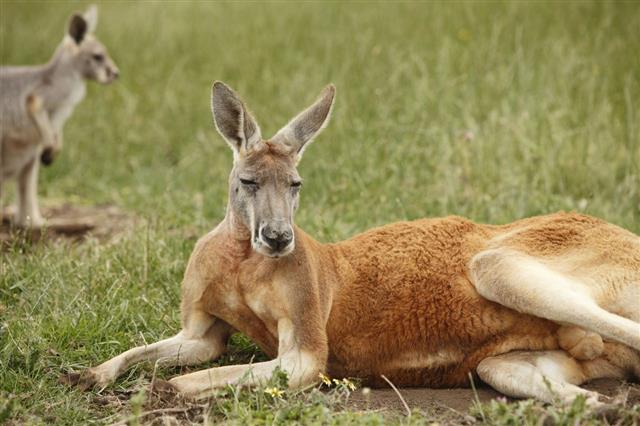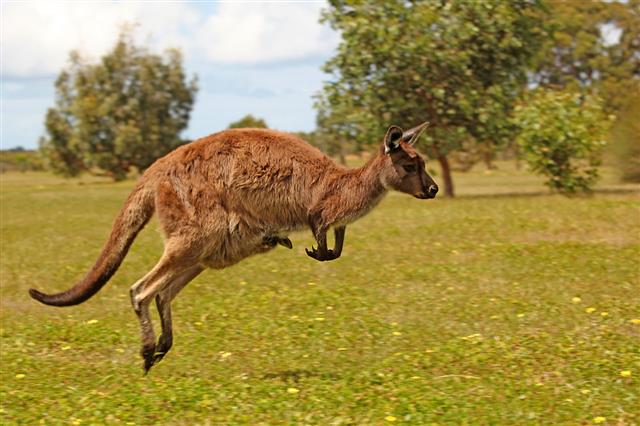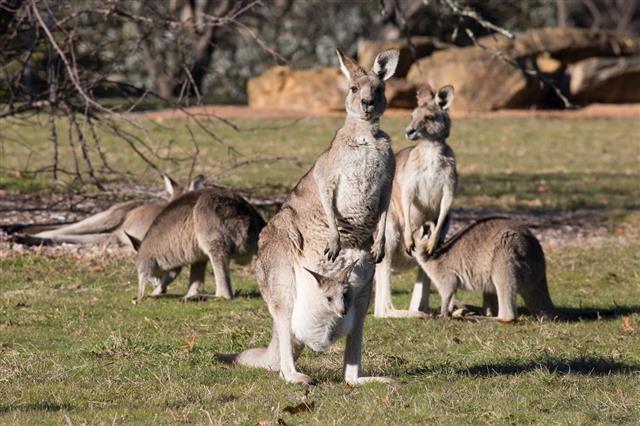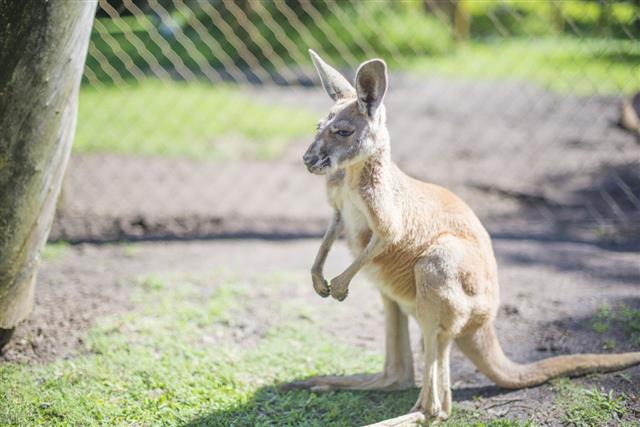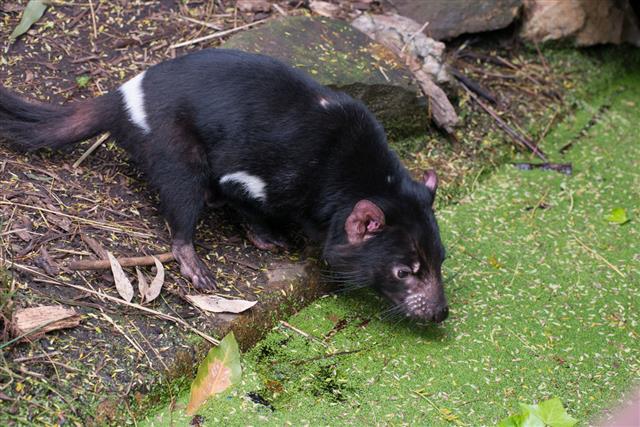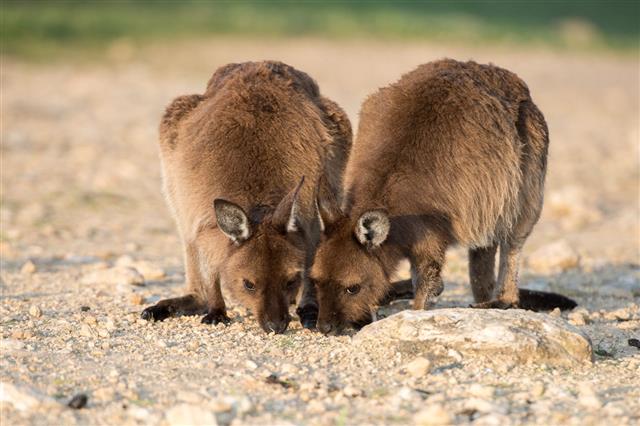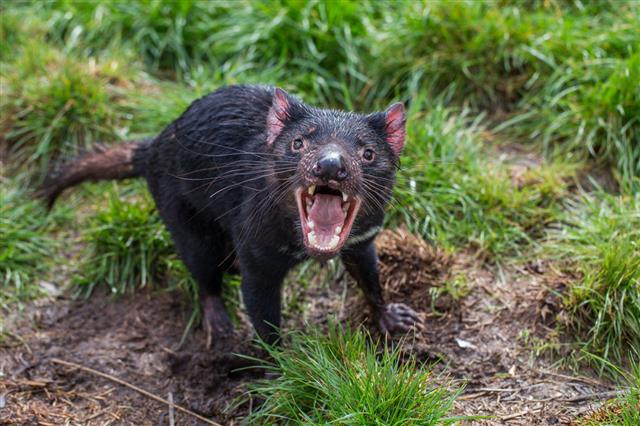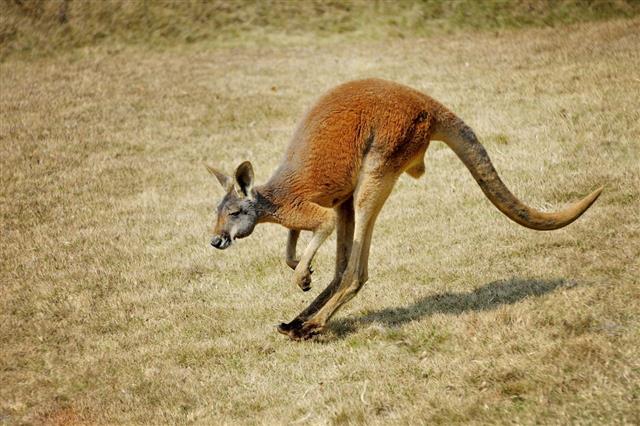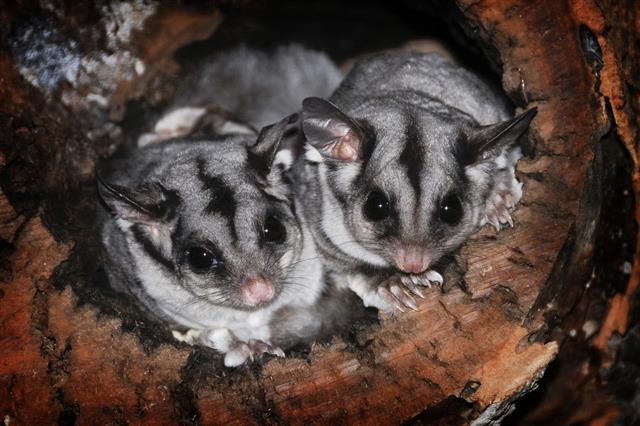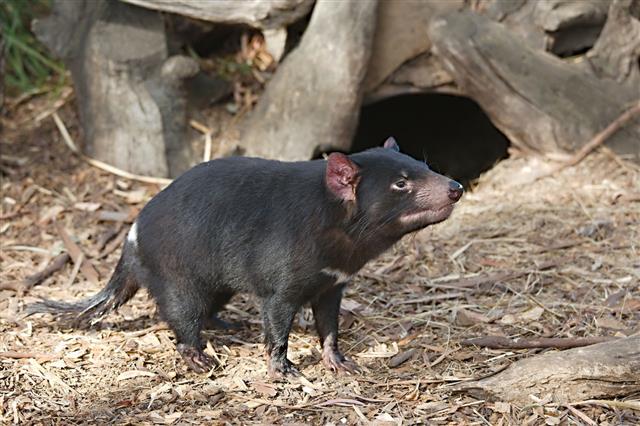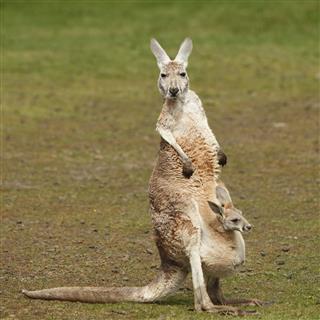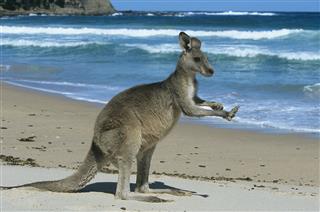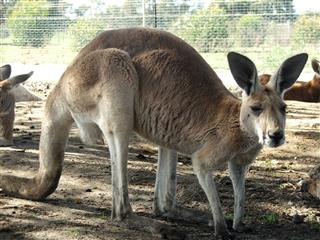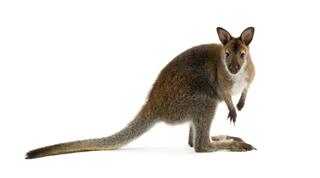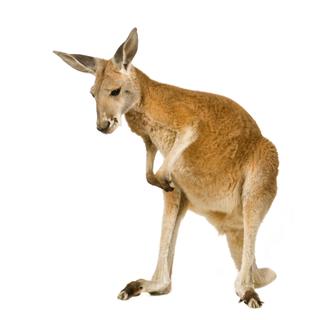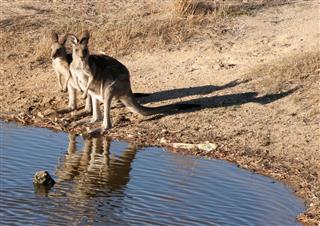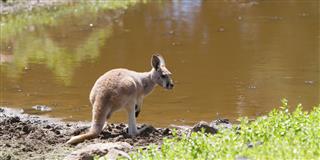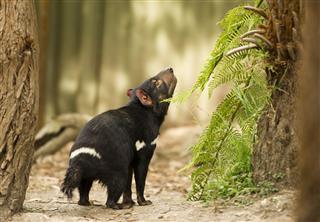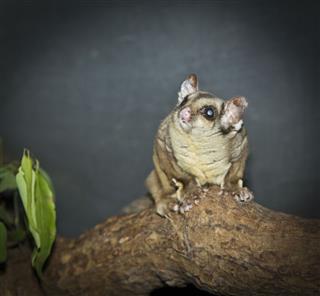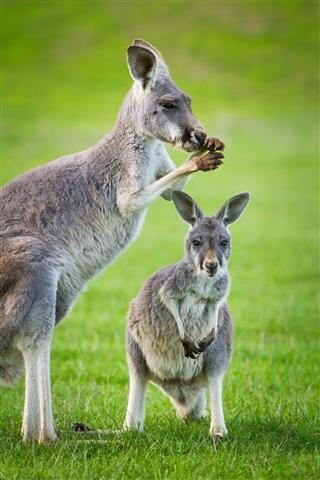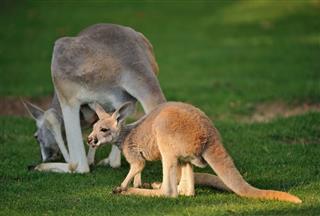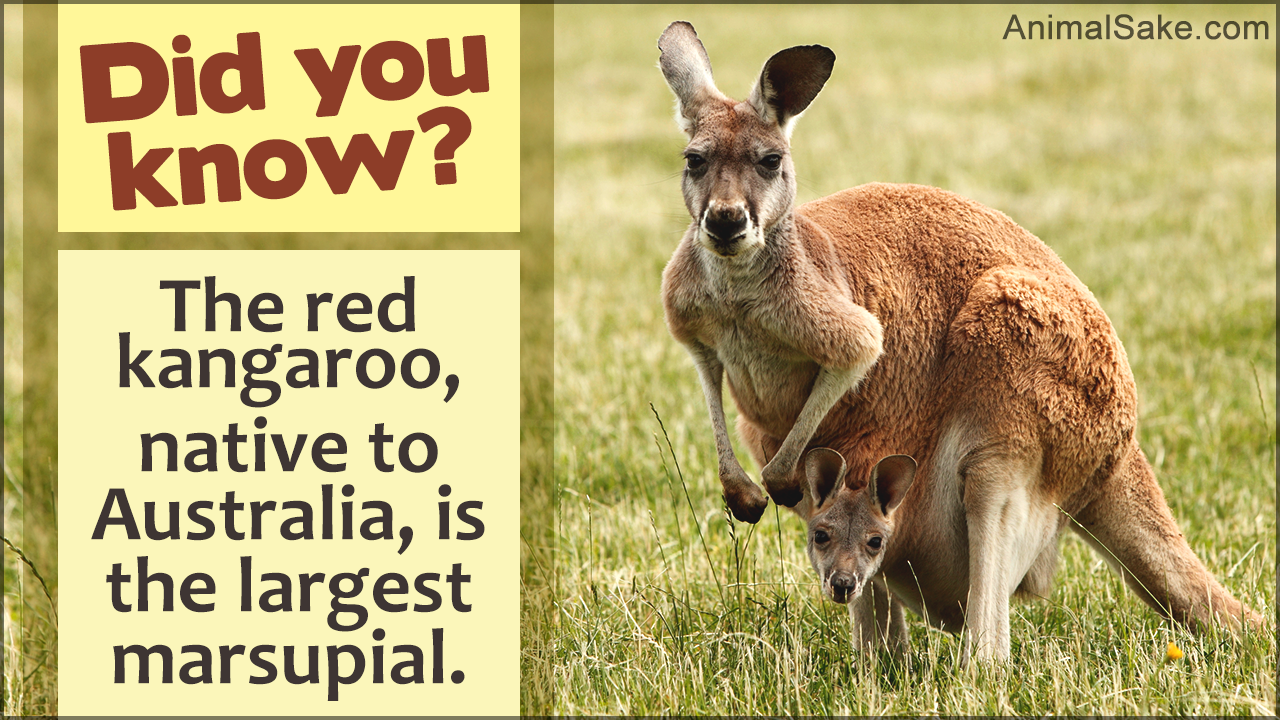
Marsupial animals are members of a large animal group whose young ones are born in an immature state. In these animals, females usually carry and harbor the young in their pouches or abdomens.
Marsupials belong to a group of mammals that are further classified as – American Marsupials and Australian Marsupials. American Marsupials are found in North, South and Central America and their Australian counterparts inhabit Australia and New Guinea. These animals get the name marsupial from the pouch that they have. In the biological cycle of marsupial animals the young ones are born very early. This is the reason, they complete their development cycle in their mother’s pouch. Let’s understand this with an example.
| The largest species of kangaroo is a red kangaroo. A baby red kangaroo is born after 33 days of fertilization. When born it is of the size of a honeybee. It stays in the mother’s pouch for 27 weeks and after it completes its development cycle it comes out of the mother’s pouch and spends more time in the surrounding habitat. |
Facts about Marsupials
- Female marsupials do not have a developed placenta (an organ that helps in the development of the fetus in the mother’s womb). Hence, the young spends minimum time in the womb and are not fully developed when born.
- Young marsupials are born blind, hairless and are extremely tiny. They crawl to the abdominal pouch and stay there for a considerable amount of time and attach themselves to a nipple.
- Marsupials with more than 330 species dominate the major part of Australia. They are also found in South and Central America. In due course of time, most marsupials moved from the South to live in North America and most of them died there. The only marsupial found in North America is Opossum.
- Koala bears, kangaroo, marsupial lion, marsupial mole, possum, wombats, Tasmanian devil, bandicoot, and Tasmanian tiger are well-known species of marsupial mammals.
- Long-tailed planigale is the smallest marsupial, measuring between 2 and 2.3 inches and weighs almost 4.3 grams. It resides in the Northern parts of Australia.
- The largest marsupial is the Red Kangaroo. They weigh almost 200 pounds and can hop up to 40 miles per hour. Male red kangaroos weigh more then females.
- The koala bear lives on trees and particularly feeds on eucalyptus leaves. Before eating, it carefully smells the leaves and then decides whether they are fit for consumption.
- Tasmanian Devil has a large appetite and often attacks other marsupials in large numbers.
There are more than 330 species of marsupial animals. Below is the list of some marsupials in random order.
| Marsupial Animals | Binomial Name |
| Thylacine or Tasmanian Tiger (Carnivore) | Thylacinus cynocephalus (Extinct) |
| Agile Antechinus (Carnivore) | Antechinus agilis |
| Fawn Antechinus (Carnivore) | Antechenus bellus |
| Yellow-footed Antechinus (Carnivore) | Antechinus flavipes |
| Atherton Antechinus (Carnivore) | Antechinus godmani |
| Cinnamon Antechinus (Carnivore) | Antechinus leo |
| Swamp Antechinus (Carnivore) | Antechinus minimus |
| Brown Antechinus (Carnivore) | Antechinus stuartii |
| Subtropical Antechinus (Carnivore) | Antechinus subtropicus |
| Dusky Antechinus (Carnivore) | Antechinus swiansonni |
| Brush Tailed Mulgara (Carnivore) | Dasycercus blythi |
| Crest-Tailed Mulgara (Carnivore) | Dasycercus cristicauda |
| Kaluta (Carnivore) | Dasykaluta rosamondae |
| Kowari (Carnivore) | Dasyuroides bymei |
| Western Quoll (Carnivore) | Dasyurus geoffroii |
| Northern Quoll (Carnivore) | Dasyurus hallucatus |
| Tiger Quoll (Carnivore) | Dasyurus maculatus |
| Eastern Quoll (Carnivore) | Dasyurus viverrinus |
| Tasmanian Devil (Carnivore) | Sarcophilus harrissi |
| Gilbert’s Dunnart (Carnivore) | Sminthopsis gilberti |
| Nubmat (Carnivore) | Myremecobius fasciatus |
| Pig Footed Bandicoot (Carnivore) | Chaeropus ecaudatus (Extinct) |
| Bilby (Carnivore) | Macrotis lagotis |
| Northern Marsupial Mole (Carnivore) | Notoryctes caurinus |
| Southern Marsupial Mole (Carnivore) | Notoryctes typholps |
| Koala (Herbivore) | Phascolarctos cinereus |
| Mountain Brushtail Possum (Herbivore) | Trichosurus cunninghami |
| Yellow Belly Glider | Petaurus australis |
| Red Kangaroo (Herbivore) | Marcopus rufus |
| Marsupial Lion (Carnivore) | Thylacoleo carniflex (Extinct) |
Marsupials live longer in the wild than in captivity. Most of these species are nocturnal and prefer coming out of their homes in the night. Most of the species listed in this article is on the verge of extinction. We must all try to preserve such animals because they help in maintaining the ecological balance of planet earth.
